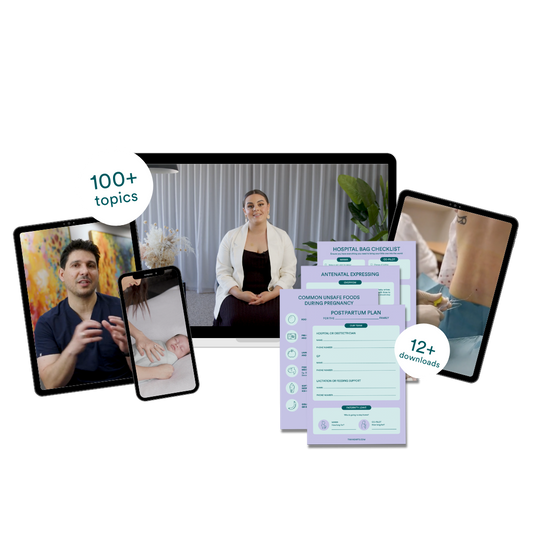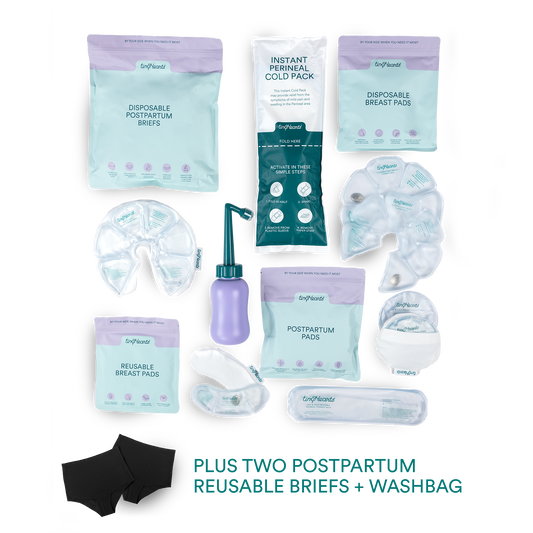Infertility affects millions of people all over the world; in fact, 1 in 6 couples in Australia are affected by infertility. The causes of infertility can range from hormonal issues in males and females, to genetics, endometriosis, or trouble ovulating in women. But, with so many recent medical advances and treatments, pregnancy can now be possible for any woman who might be struggling. The most common of these treatments is in vitro fertilisation.
Often referred to as IVF, in vitro fertilisation is a fertility treatment used to help a woman become pregnant. In vitro fertilisation can help with fertilisation, embryo development, implantation and can even help in the prevention of certain genetic diseases. Simply put, IVF involves combining an egg and sperm outside the body or in vitro, normally in a test tube in a lab. The fertilised egg, or embryo, is then transferred and implanted into a woman’s uterus, increasing the chance of pregnancy. IVF is normally the endpoint of a fertility journey; the last alternative to consider if you can’t get pregnant. It doesn’t always come easy — it can be time consuming, stressful and it takes some patience! We’re going to walk you through the process and provide some insight on what you can expect if you’ve decided to head down this particular fertility path!
When to Consider IVF:
First things first, IVF is an intense medical procedure. While there have been over eight million success stories, it’s not right for everyone and often comes with trials and tribulations and the possibility of failure. With all that being said, when and who should consider IVF? Blocked, removed or damaged fallopian tubes, an ovulation disorder, unexplained infertility issues or genetic disorders are the best type of patients for this procedure. The next thing to keep in mind is age; as a woman gets older her egg quality and quantity declines. IVF is more successful in women under the age of 35, with the rate of pregnancy dropping by half in older patients.
The Process:
Buckle up, this can be a long process! Each IVF treatment can take around six weeks, but this all depends on how your body responds to the medications.
The first step in your fertility journey...
will be meeting with your fertility specialist. They will review your medical history and evaluate if this is the best treatment option for you. Your partner should also attend this initial first meeting.
2. Next up is a pre-treatment consultation.
In this meeting your fertility specialist will answer any questions that may have arisen, and you will sign all content forms and be introduced to the medications you will be taking.
3. Treatment begins.
The first step in IVF treatment is suppressing the natural menstrual cycle, which is normally done by daily hormone injections, typically within the first two weeks of treatment.
4. Hormone stimulation is the next step in your treatment.
Your fertility specialist will show you how to self-administer your FSH injections, or Follicle Stimulating Hormones. These injections stimulate your ovaries to produce more eggs than you normally would. There's a higher success rate when more eggs are collected. This step typically takes 8 to 12 days.
5. You’ll be closely monitored.
Blood tests and ultrasounds will be performed pretty regularly to measure your hormone levels and the size and number of ovarian follicles. This is also when your specialist can determine the time for egg collection.
6. Next up, another shot.
Your specialist will then administer a trigger injection of hCG (human chorionic gonatrophin) in the evening. This prompt’s (or triggers) the eggs’ release and you will come back for the egg retrieval process in about 36 to 38 hours.
7. Egg collection.
On the day of your egg retrieval, you will be at the hospital for about 4 hours. This short, outpatient procedure normally requires a light, general aesthetic. Your partner must also be there to provide a fresh sperm sample so the fertilisation process can begin right away. Have your partner drive you home and take the rest of the day off to relax.
8. Fertilisation of your eggs begins.
Your collected eggs and sperm sample are taken to a lab and placed together in a dish where fertilisation occurs. This process takes about 5 - 6 days.
9. The egg and sperm are then individually incubated
and examined to see if fertilisation has occurred. Once embryo development happens, your specialist will call you and then it is on to embryo transfer.
10. Embryo transfer.
One viable embryo is then chosen and a non-surgical procedure that usually involves a catheter is performed. The embryo is transferred into the uterus through the cervix. Any extra embryos will be frozen and stored for future use.
11. Pregnancy test.
Now for the exciting part; a pregnancy test! You’ll be scheduled for a blood test two weeks after your procedure to see if the embryo implanted successfully. By mid-afternoon your results will be in and if you’ve tested positive, congratulations, you’re pregnant! Your nurse will then set up an ultrasound appointment 3 weeks later.
What Can You Expect? The Results:
Like we said before, IVF has been hugely successful, especially in women under 35. The success rate of becoming pregnant on your first round of IVF treatment is anywhere from 20 - 30%. If your first time around didn’t work, that’s okay, it’s normal! Many women have to undergo a few rounds of IVF before they are successful, and it’s advised to try at least three more times if not successful the first time around. In vitro fertilisation is the most effective way for infertile couples to become pregnant, so stick with it if you can.
How Many People in Australia Use IVF?
In today's world, IVF is the standard and most trusted (and studied!) medical practice for getting pregnant. One in 25 babies born in Australia are born from in vitro fertilisation, which is about 3% of all babies born. Australia is also a leader in safe and accessible IVF treatments, with more than 70,000 treatments performed every year.








